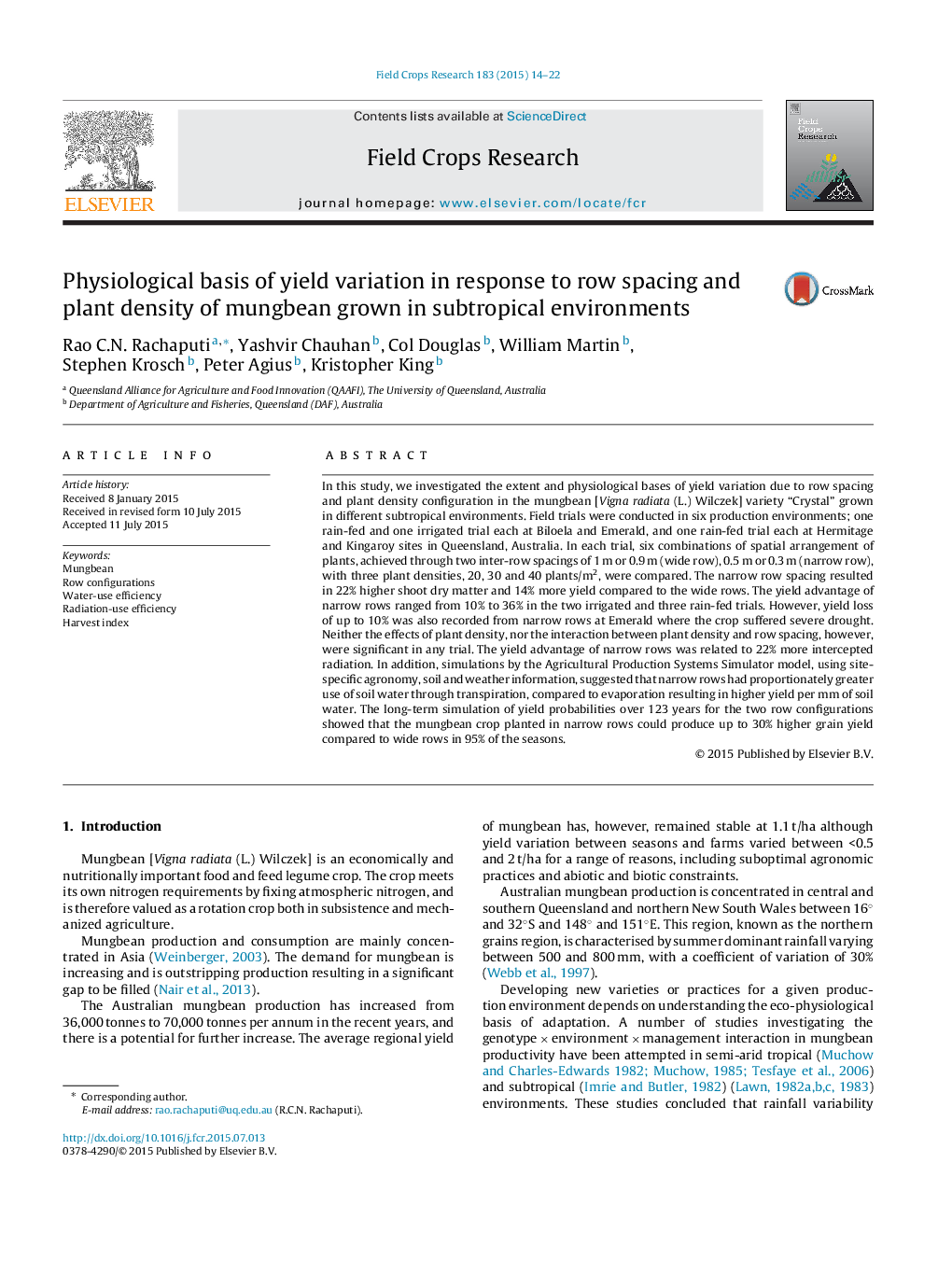| کد مقاله | کد نشریه | سال انتشار | مقاله انگلیسی | نسخه تمام متن |
|---|---|---|---|---|
| 6374669 | 1624680 | 2015 | 9 صفحه PDF | دانلود رایگان |
عنوان انگلیسی مقاله ISI
Physiological basis of yield variation in response to row spacing and plant density of mungbean grown in subtropical environments
ترجمه فارسی عنوان
مبنای فیزیولوژیکی تنوع عملکرد در پاسخ به فاصله ردیف و تراکم بوته مونوبن در محیط های نیمه گرمسیری
دانلود مقاله + سفارش ترجمه
دانلود مقاله ISI انگلیسی
رایگان برای ایرانیان
کلمات کلیدی
ماش، تنظیمات ردیف، بهره وری استفاده از آب، بهره وری استفاده از تابش، شاخص برداشت،
موضوعات مرتبط
علوم زیستی و بیوفناوری
علوم کشاورزی و بیولوژیک
علوم زراعت و اصلاح نباتات
چکیده انگلیسی
In this study, we investigated the extent and physiological bases of yield variation due to row spacing and plant density configuration in the mungbean [Vigna radiata (L.) Wilczek] variety “Crystal” grown in different subtropical environments. Field trials were conducted in six production environments; one rain-fed and one irrigated trial each at Biloela and Emerald, and one rain-fed trial each at Hermitage and Kingaroy sites in Queensland, Australia. In each trial, six combinations of spatial arrangement of plants, achieved through two inter-row spacings of 1Â m or 0.9Â m (wide row), 0.5Â m or 0.3Â m (narrow row), with three plant densities, 20, 30 and 40 plants/m2, were compared. The narrow row spacing resulted in 22% higher shoot dry matter and 14% more yield compared to the wide rows. The yield advantage of narrow rows ranged from 10% to 36% in the two irrigated and three rain-fed trials. However, yield loss of up to 10% was also recorded from narrow rows at Emerald where the crop suffered severe drought. Neither the effects of plant density, nor the interaction between plant density and row spacing, however, were significant in any trial. The yield advantage of narrow rows was related to 22% more intercepted radiation. In addition, simulations by the Agricultural Production Systems Simulator model, using site-specific agronomy, soil and weather information, suggested that narrow rows had proportionately greater use of soil water through transpiration, compared to evaporation resulting in higher yield per mm of soil water. The long-term simulation of yield probabilities over 123 years for the two row configurations showed that the mungbean crop planted in narrow rows could produce up to 30% higher grain yield compared to wide rows in 95% of the seasons.
ناشر
Database: Elsevier - ScienceDirect (ساینس دایرکت)
Journal: Field Crops Research - Volume 183, November 2015, Pages 14-22
Journal: Field Crops Research - Volume 183, November 2015, Pages 14-22
نویسندگان
Rao C.N. Rachaputi, Yashvir Chauhan, Col Douglas, William Martin, Stephen Krosch, Peter Agius, Kristopher King,
